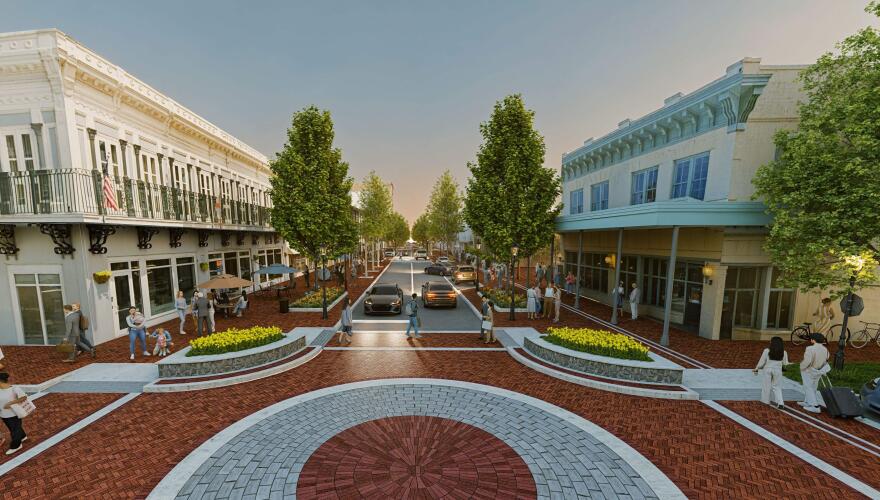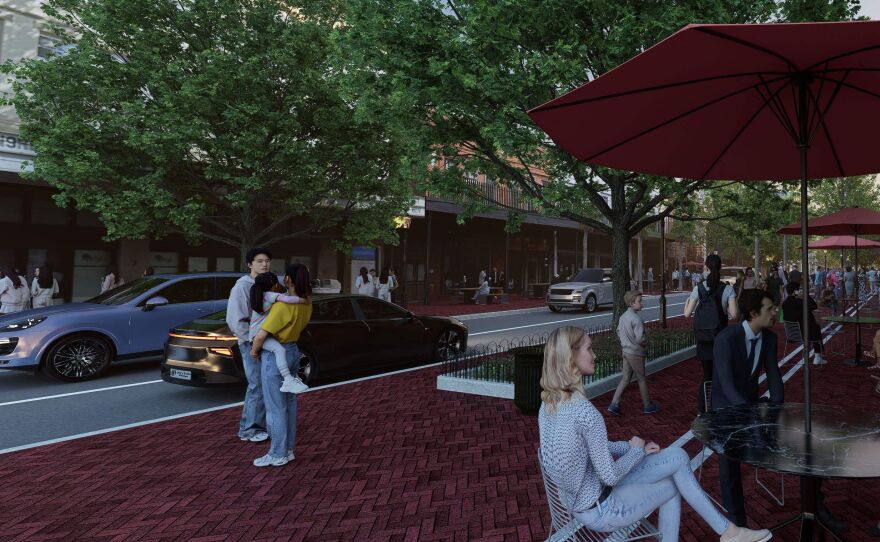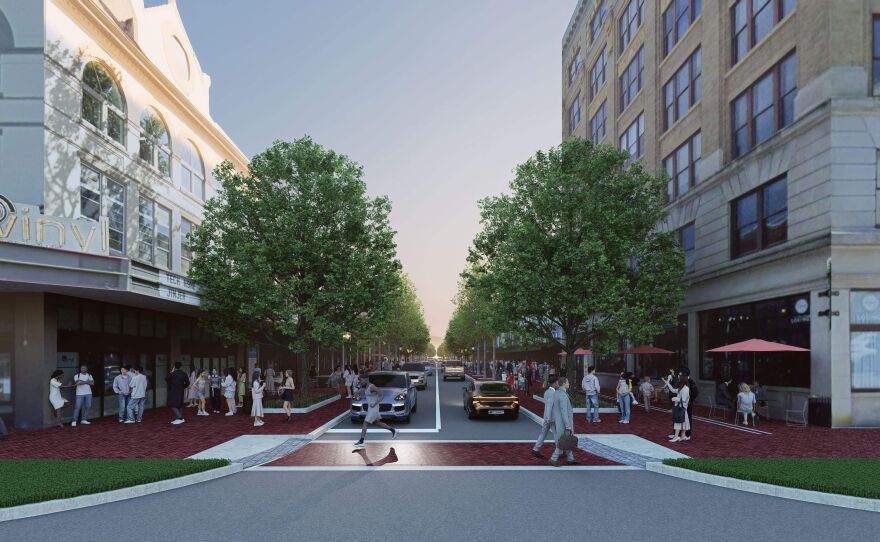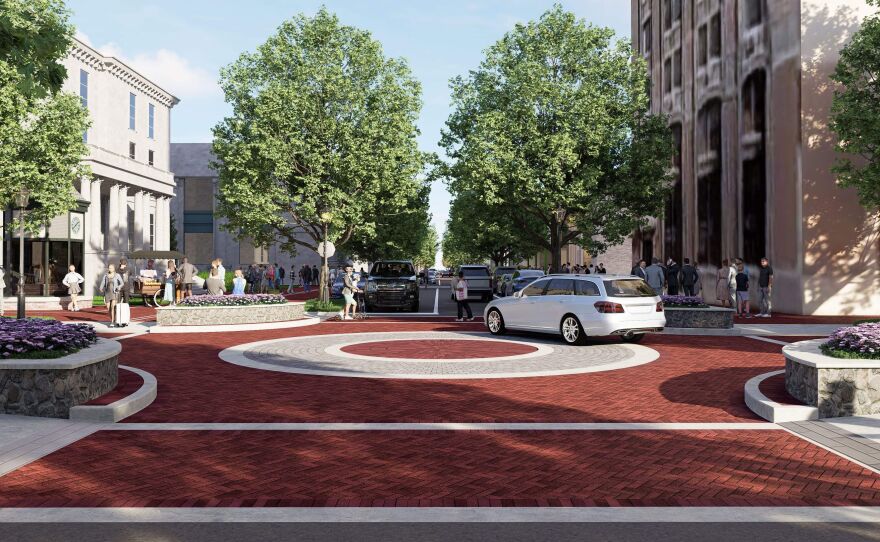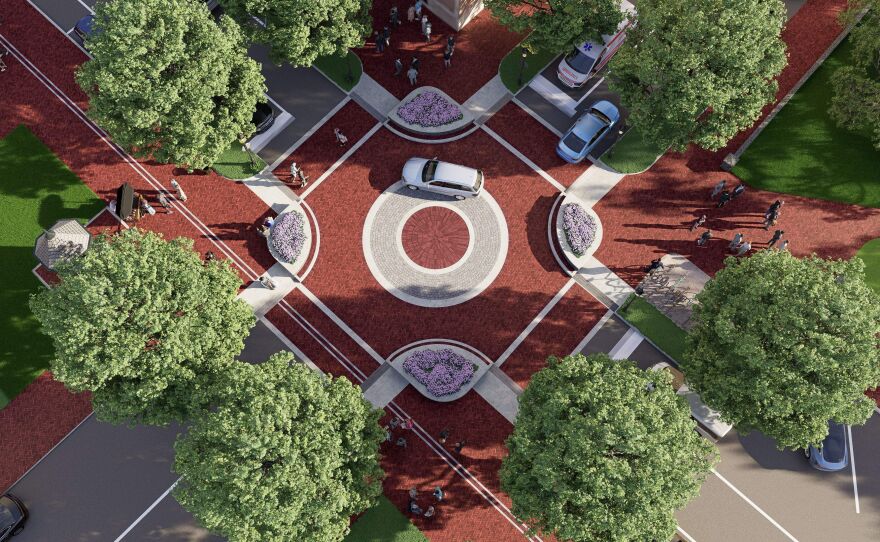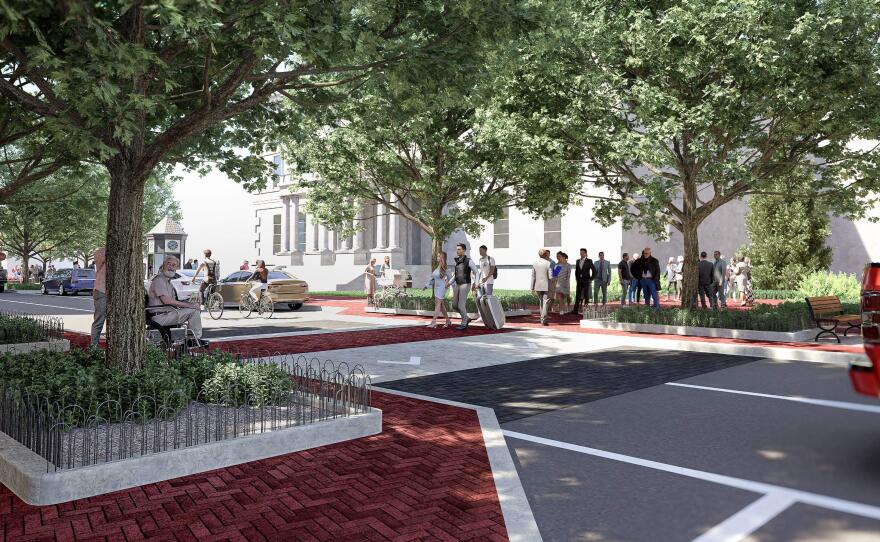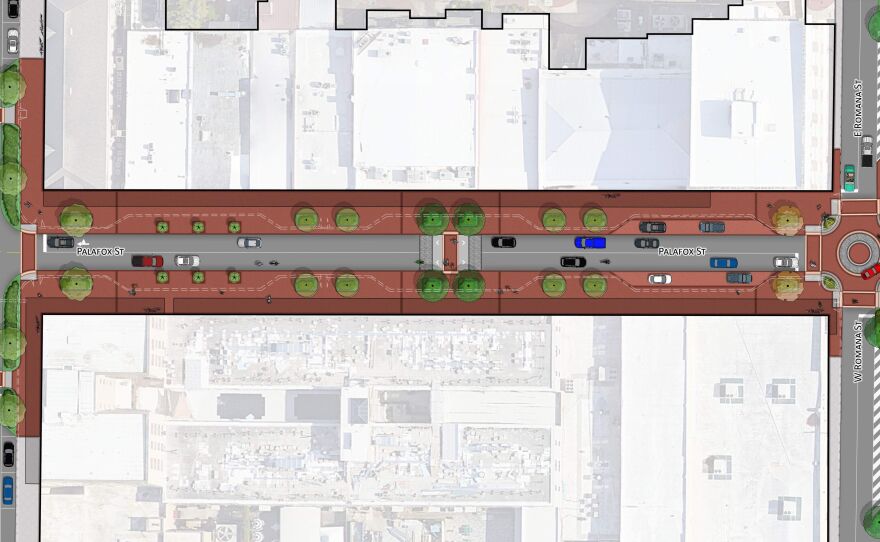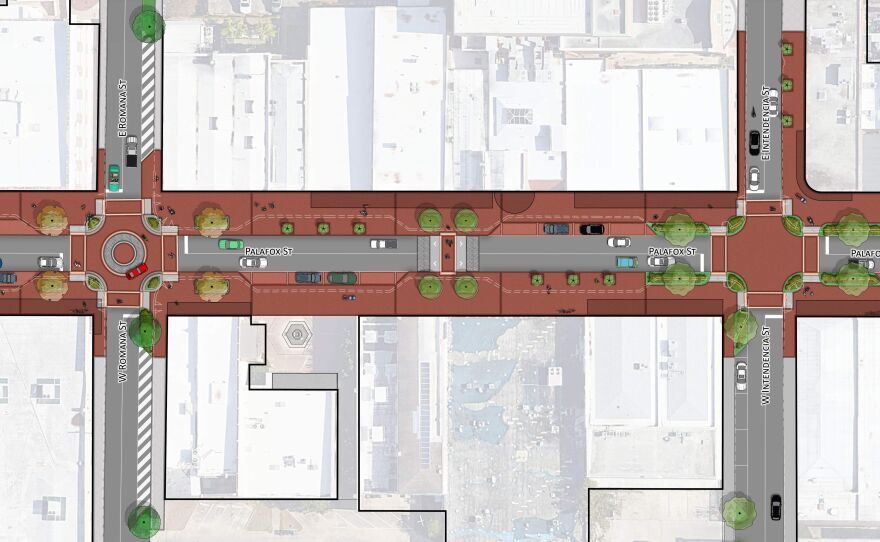For more than an hour Monday night, the Pensacola City Council, acting as the city’s Community Redevelopment Agency, debated the future of a major redesign of downtown’s signature corridor.
Support Local Stories. Support Public Media.
In the end, the board landed on a middle path: move forward with bidding the project, but delay a decision on how to cover its full price tag.
The "New Palafox Project" would reconstruct four blocks of Palafox Street, narrowing car lanes, widening sidewalks, and replacing aging infrastructure. City staff say the $9.2 million effort—part of a broader vision to improve downtown walkability—will also upgrade stormwater systems, plant 51 new canopy trees, and enhance the pedestrian experience with mid-block crossings and pervious pavers.
Although the meeting was held in council chambers, it was technically a meeting of the Community Redevelopment Agency, or CRA. The CRA is a special public body tasked with reinvesting in designated redevelopment districts using tax increment financing, or TIF—essentially, a mechanism that captures growth in property tax revenues and reinvests it back into the area. In Pensacola, the City Council serves as the CRA board when meeting in that role.
The project’s cost has nearly doubled since early conversations, when it was expected to cost closer to $5 million. City staff say part of that increase stems from upgraded safety features—most notably the installation of crash-rated security bollards at key intersections. The change came in response to a 2023 terrorist attack in New Orleans, in which a driver deliberately plowed into pedestrians along a crowded commercial corridor. Pensacola officials say they hope to prevent similar vehicle-based attacks by reinforcing pedestrian zones.
But how to fund the project—and how to minimize disruption to nearby businesses—remained sticking points throughout Monday’s meeting.
"This isn’t an easy decision," Councilman Charles Bare said before offering the motion to move forward with bidding the project but to strike a proposed $4.44 million bond reallocation from the item. His amendment passed 6-1, with only Councilwoman Teniade Broughton opposed; the amended motion passed unanimously.
Had the original recommendation been approved, it would have reallocated funding originally designated for the Main Street phase of the Hashtag Connector to the Palafox segment, which city staff emphasize is also part of the broader Hashtag vision. Staff also noted that the Cedar Street leg of the Hashtag Connector recently secured design funding through the state’s SunTrail program, reducing the urgency to preserve bond funds for that segment.
Some CRA members questioned the wisdom of shifting dollars to a corridor they viewed as already successful.
"Palafox is the one street that isn’t broken," Councilwoman Allison Patton said.
Mayor D.C. Reeves urged the board to act, warning that continued delays would likely drive up costs even further. He noted the city had hosted at least six meetings with business owners and incorporated numerous design changes in response to their concerns. However, some business owners who attended Monday's meeting still expressed concerns.
At issue now is not whether the project will happen, but when—and at what cost. City staff will now solicit contractor bids and return to the board later this year with updated numbers and a final funding proposal.
Several downtown business owners used public comment to press for more say over the construction timeline and staging plans. Indigeaux Denim Bar owner Katie Bosso said she worried about the impact of long-term construction zones on foot traffic.
"We are concerned about the length of the project," she told the board. "... If there’s a construction zone, I want to stay away from it no matter how much marketing you do."
Dog House Deli owner Nathan Holler noted his block could lose all curbside parking under the plan—a potential safety issue for staff and patrons alike, he said.
Reeves said construction phasing would ultimately be informed by contractor bids, and the city would continue meeting with merchants to refine plans before work begins.
The final approach—whether to shut the entire corridor for 20 weeks or work block-by-block over a longer period—will be determined in the months ahead.

